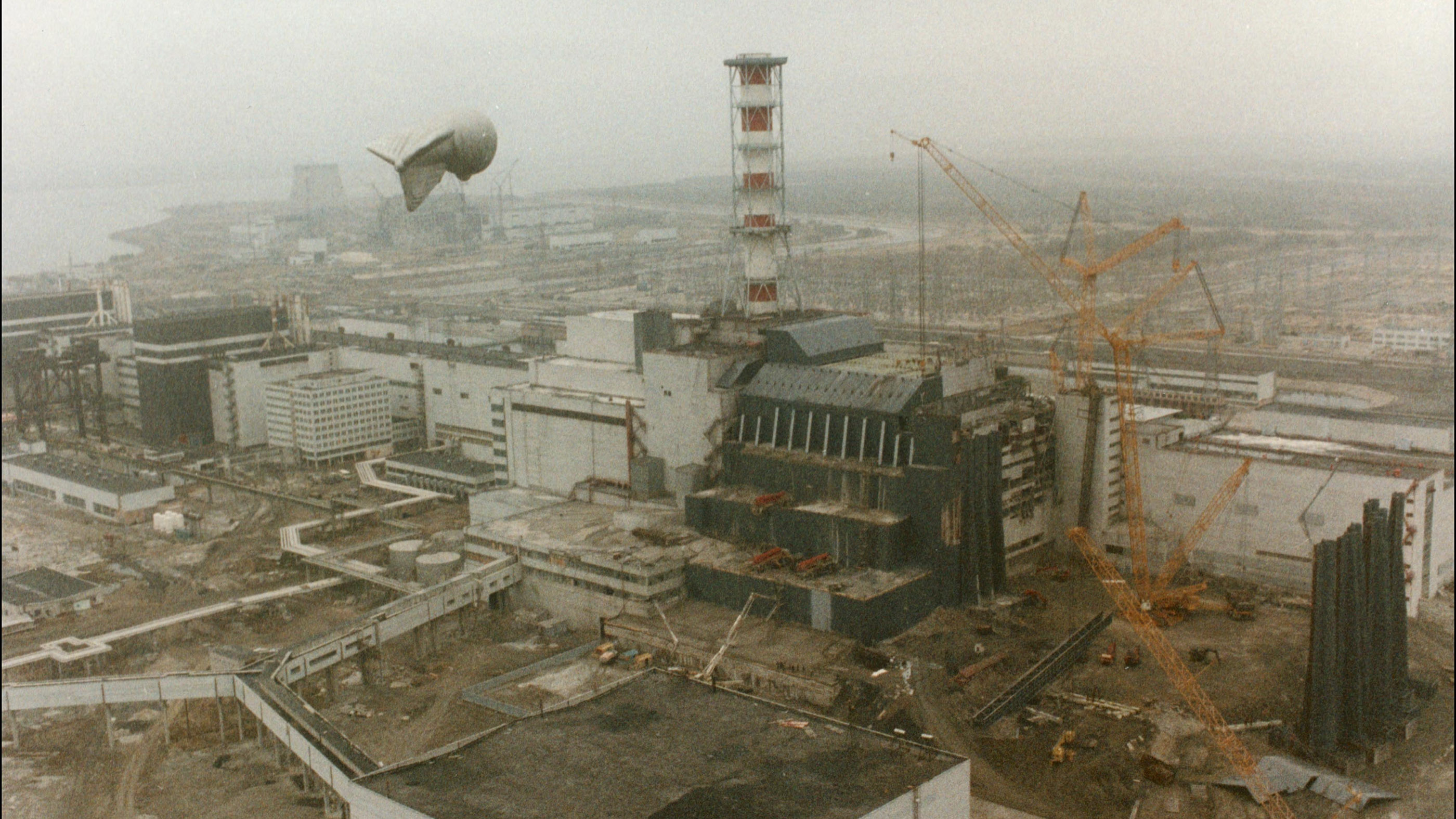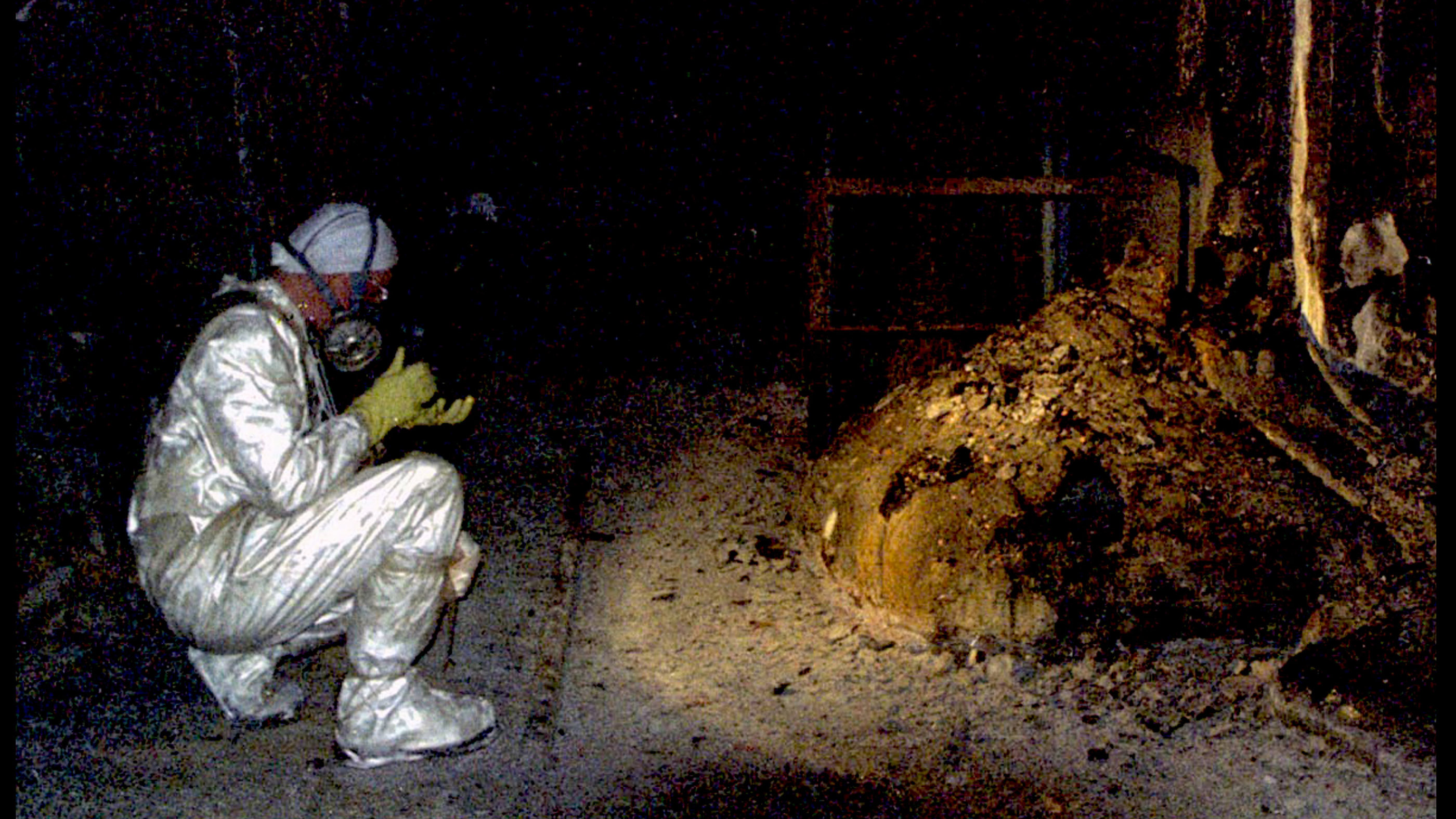What would happen if Russia bombed Chernobyl?

Russian troops have captured the Chernobyl nuclear power plant, which still contains nuclear waste that could pose a threat to the surrounding area. What would happen if the site were to be bombed?
"Our defenders are giving their lives so that the tragedy of 1986 will not be repeated," Ukrainian President Volodymyr Zelenskyy tweeted a few hours before the power plant was seized yesterday. "This is a declaration of war against the whole of Europe."
Chernobyl is the site of four nuclear reactors, three of which have been decommissioned. The fourth was the source of the historic explosion in 1986. That reactor is now protected by an inner concrete sarcophagus and a new, 32,000-ton outer shell. In addition, spent nuclear fuel from the other reactors is still stored at the site, along with radioactive waste from contaminated equipment.
Even though the reactor is covered, radiation has contaminated the entire site. In fact, dozens of radioactive elements were launched into the air during the meltdown, with a few of them considered the most dangerous to life, including the isotopes iodine 131, strontium 90, cesium 134 and cesium 137; the strontium and cesium isotopes have long enough half-lives that they still linger at the site, according to the International Atomic Energy Agency.
Now, some public figures have expressed fears that any future shelling of these sites could spread this radioactive material far beyond Chernobyl's exclusion zone — an off-limits area around the disaster — even as far as neighboring countries.
On Thursday morning (Feb. 24), Anton Gerashchenko, an adviser and former deputy minister at the Ukrainian Ministry of Internal Affairs, wrote on Facebook, "If as a result of the occupiers' artillery strikes the nuclear waste storage facility is destroyed, the radioactive dust may cover the territories of Ukraine, Belarus and the EU [European Union] countries!"
Related: 5 interesting facts about Chernobyl
Sign up for the Live Science daily newsletter now
Get the world’s most fascinating discoveries delivered straight to your inbox.
But the reality may not be so dire, according to Edwin Lyman, director of nuclear power safety at the Union of Concerned Scientists. "Even if there were an inadvertent shelling of that confinement structure, I think it would take more than that to mobilize a significant amount of radioactive material," Lyman told Live Science.
"It would be hard for me to imagine that kind of consequence," Lyman added.

Spent fuel, or the radioactive elements that were used to fuel the power plant, continue to decay into more stable elements and, in doing so, continue to release heat, he said.
"The most serious concern is the wet storage of spent fuel, because that's probably the most concentrated quantity of radioactive material on-site," Lyman said. "Generally, spent nuclear fuel still has decay heat. And so if it's in wet storage, there has to be some way of removing that heat."
That fuel has been cooling for at least a couple of decades. "And so that decay heat is not that significant," Lyman said. "But still, if there was disruption to cooling … or if there was a breach of the pool that led to draining water, then that fuel could conceivably heat up to the point where it might burn. That's probably the biggest threat."
However, such burning could take days or weeks, he added.
A more recent concern involves rising radiation levels around the facility, most likely a result of radioactive dust kicked up by military vehicles. But the type of dust and the radiation doses being measured suggest that this may not be much of a threat, either, according to Lyman.
"If it's a resuspension of dust, this is generally stuff that was not that mobile, or it would have blown away," he said. "So it's probably heavier particles of soil that don't disperse very far." More likely, he added, it might cause a temporary increase in radiation levels, and the data will show whether that's true.
But even such a temporary increase may not be a danger to human health, Lyman said.
"The dose rates they're finding are not that much greater than the usual dose rates in that area, which, admittedly, are probably about a hundred times the background dose of anywhere else in the world," Lyman said. "But even so, if [the troops] don't spend that much time in the area, it's not going to have a significant impact on their health compared to the threat of dying in war."
Nonetheless, Lyman thinks this event shows that plans for nuclear power need to consider the possibility of war.
"The potential for nuclear power plants to be targets at wartime is something that really needs consideration," Lyman said, "especially when they're talking about expanding nuclear power to parts of the world that currently have more unstable regions."
Originally published on Live Science.

Ashley Hamer is a contributing writer for Live Science who has written about everything from space and quantum physics to health and psychology. She's the host of the podcast Taboo Science and the former host of Curiosity Daily from Discovery. She has also written for the YouTube channels SciShow and It's Okay to Be Smart. With a master's degree in jazz saxophone from the University of North Texas, Ashley has an unconventional background that gives her science writing a unique perspective and an outsider's point of view.









